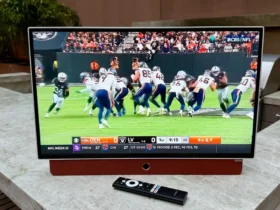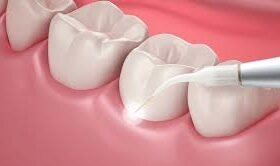Commercial properties require robust and efficient plumbing systems to support businesses’ diverse needs and operations. Unlike residential plumbing, commercial plumbing often involves larger, more complex systems that must handle higher usage and meet stricter regulatory standards. Specialized plumbing techniques are essential to ensure reliability, safety, and efficiency in these settings. We will explore various advanced plumbing techniques in commercial properties, highlighting their applications and benefits. Understanding these techniques is crucial for property managers, business owners, and plumbing professionals to maintain optimal plumbing performance. Archer Plumbing LLC is the right place to go if you are looking for a professional with advanced plumbing techniques.
Advanced plumbing techniques in commercial properties
1. High-Pressure Water Systems
High-pressure water systems are commonly used in commercial properties to ensure adequate water flow across extensive plumbing networks. These systems are designed to maintain consistent water pressure, even during peak usage times, preventing issues such as low water pressure and ensuring efficient operation of fixtures and appliances. High-pressure systems often include booster pumps, which increase water pressure from the main supply. These pumps are especially important in multi-story buildings where water needs to be delivered to upper floors. Proper installation and maintenance of high-pressure water systems are essential to avoid pipe bursts and leaks caused by excessive pressure.
2. Backflow Prevention
Backflow prevention is critical to commercial plumbing, protecting the potable water supply from contamination. Backflow occurs when water flows backward through the system, potentially introducing harmful substances into the clean water supply. This can happen due to changes in pressure, such as a drop in main water pressure. Commercial properties use backflow prevention devices, such as reduced pressure zone (RPZ) assemblies, double-check valves, and atmospheric vacuum breakers to prevent this issue. Regular testing and maintenance of backflow prevention devices are mandated by health and safety regulations to ensure their proper functioning and compliance.
3. Grease Traps and Interceptors
Grease traps and interceptors are essential for commercial kitchens and food service establishments to prevent fats, oils, and grease (FOG) from entering the plumbing system. These substances can solidify and cause severe blockages in pipes and sewer lines. Grease traps capture FOG before it enters the wastewater system, allowing only water to pass through. They must be properly sized and installed based on the kitchen’s capacity and usage. Regularly cleaning and maintaining grease traps are crucial to ensure their effectiveness and prevent plumbing issues and environmental violations.
4. Trenchless Technology
Trenchless technology is a modern plumbing technique used for repairing and replacing underground pipes with minimal disruption to the property. Traditional methods often require extensive excavation, which can be costly and time-consuming. Trenchless methods, such as pipe bursting and pipe lining, allow for repairing or replacing pipes without significant digging. Pipe bursting involves breaking the old pipe while simultaneously pulling in a new pipe, while pipe lining involves inserting a resin-coated liner that hardens to form a new pipe within the old one. These techniques are particularly useful in commercial settings, where minimizing downtime and disruption is critical.
5. Hydronic Heating Systems
Hydronic heating systems use water to transfer heat through a network of pipes, providing efficient and comfortable heating for commercial properties. These systems can be installed on floors, walls, or ceilings and are ideal for large spaces requiring consistent heating. Hydronic systems are energy-efficient, reducing operating costs and providing even heat distribution. They can be integrated with renewable energy sources, such as solar panels, for further efficiency. Proper installation and maintenance of hydronic heating systems are essential to ensure their longevity and performance, making them a preferred choice for many commercial properties.
6. Advanced Drainage Systems
Advanced drainage systems are crucial for managing large volumes of wastewater in commercial properties. These systems include channel drains, catch basins, and stormwater management systems designed to handle high flow rates and prevent flooding. Channel drains are used in parking lots and loading docks to direct water away from the property efficiently. Catch basins collect debris and prevent it from entering the drainage system, reducing the risk of blockages. Implementing advanced drainage solutions helps maintain the integrity of the plumbing system and protects the property from water damage.
7. Electronic Leak Detection
Electronic leak detection systems are advanced tools used to identify leaks in commercial plumbing systems quickly and accurately. These systems use sensors and monitoring technology to detect changes in water flow, pressure, and moisture levels. When a leak is detected, the system alerts property managers or maintenance staff, allowing for immediate action. Electronic leak detection helps prevent extensive water damage, reduces water waste, and lowers repair costs by addressing issues before they escalate. These systems are particularly valuable in large commercial properties where manual inspection would be time-consuming and inefficient.
8. Vacuum Plumbing Systems
Vacuum plumbing systems use negative pressure to transport waste and water through pipes, offering an efficient and flexible solution for commercial properties. Unlike traditional gravity-based systems, vacuum plumbing can move waste upward and horizontally, providing greater design flexibility. These systems are commonly used in environments such as airports, hospitals, and commercial kitchens, where space constraints and high usage demand efficient waste management. Vacuum plumbing systems reduce water usage, minimize the risk of blockages, and allow for easy reconfiguration of plumbing layouts, making them ideal for modern commercial buildings.
9. Smart Plumbing Technology
Smart plumbing technology integrates digital controls and sensors to enhance the efficiency and management of commercial plumbing systems. This technology includes automated water usage monitoring, leak detection, and remote control of fixtures and appliances. Smart systems can provide real-time data and alerts, allowing for proactive maintenance and quick response to issues. For example, automated irrigation systems can optimize water usage based on weather conditions, reducing waste and operating costs. Integrating smart technology in commercial plumbing helps improve operational efficiency, conserve resources, and enhance user experience.
10. Fire Suppression Systems
Fire suppression systems are critical components of commercial plumbing, providing safety and protection against fire hazards. These systems include sprinklers, standpipes, and fire hydrants, which are strategically installed to ensure adequate coverage in case of a fire. Sprinkler systems are designed to activate automatically when they detect high temperatures, releasing water to extinguish or control the fire. Regular inspection and maintenance of fire suppression systems are required to ensure they are in working order and comply with safety regulations. Properly designed fire suppression systems protect lives and property in commercial settings.
Commercial properties require advanced plumbing techniques to ensure reliability, efficiency, and compliance with regulatory standards. High-pressure water systems, backflow prevention devices, grease traps, trenchless technology, hydronic heating, and advanced drainage systems are essential components that address the unique demands of commercial plumbing. Additionally, innovations such as electronic leak detection, vacuum plumbing, smart plumbing technology, fire suppression systems, solar water heating, water softening, grease management, and greywater recycling further enhance the performance and sustainability of commercial plumbing systems. Understanding and implementing these specialized techniques is crucial for property managers, business owners, and plumbing professionals to maintain optimal plumbing performance, reduce operational costs, and promote sustainable practices. Stakeholders can ensure their properties’ long-term success and resilience by staying informed about the latest advancements and best practices in commercial plumbing.
Read Also:- Emergency Plumbing Assistance














Leave a Reply